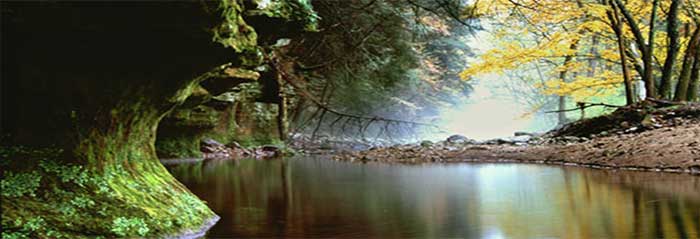The Baraboo crew
Streambank Protection Program

The Baraboo River Region consists of three different landscapes. The western half is typical “driftless” topography with narrow hilltops, steep hillsides, and winding valley floors. The northern portion, up into Adams and Juneau counties and bisected by the Wisconsin River, is rolling to generally flat with deep glacial deposits. The southeastern portion is dominated by the 25-mile-long Baraboo Range which contains the southernmost extensive exposures of Precambrian rock in Wisconsin. The 1.5 km thick quartzite rises nearly 800 feet above the surrounding plain and forms a complex doubly plunging syncline; the South Range consists of a steeply dipping quartzite and the smaller, more discontinuous North Range consists of nearly vertical rock.
The trout streams of the region are located primarily higher in the watersheds and are generally low order, wadable streams. Some of the streams, particularly those draining the Baraboo Hills in the Devil’s Lake watershed, harbor remnant native brook trout populations.
The warm water Baraboo River is the region’s premier smallmouth bass river. The Baraboo drops over 150 feet from its headwaters to its confluence with the Wisconsin River, about one-third of which occurs over an impressive five-mile stretch through the City of Baraboo. Seven dams had been constructed to power a variety of mills and generate electricity converting a fast-moving stream to a series of impoundments. The last of these dams were removed in 2001 and now the Baraboo is believed to be the longest restored free-flowing river in the country. Following the removal of the dams in the Baraboo River, lake sturgeon, catfish, walleye, sauger, smallmouth bass, freshwater drum, and other fish now can move to the upper reaches of the Baraboo River for spring spawning.
Considerations
- The Baraboo Region as a whole harbors an equal mix of brook and brown trout. Individual stream reaches tend to be dominated by either brook trout or brown trout.
- The natural habitat for brook trout is highest in Devil’s Lake and Dell Creek watersheds. There is good brook trout habitat in the streams that originate in or very near the Baraboo Hills (Rowley Creek, Boulder Creek, Leech Creek, Prentice Creek, and Harrison Creek).
- Devil’s Lake and Dell Creek watersheds contain large tracts of public conservation lands that are subject to higher degrees of resource protection than other lands in the region. Over 90% of the DNR (public) and private conservation lands in the entire region are contained within these two watersheds allowing cold base flows, lower levels of land use stress, and excellent trout habitat.
- Most of the brook trout populations are projected to be lost by the mid-century due to climate change. Remnant distributions of brook trout most resilient to the effects of climate warming are projected to be found in the Devil’s Lake and Dell Creek watersheds.
- The majority of the brown trout waters will remain resilient to the threat of climate change. Brown trout are more tolerant of a range of temperatures.
- The highest quality natural habitat for smallmouth bass is located in the largest and warmest streams, mainly the Wisconsin and Baraboo Rivers. The Wisconsin River supports an outstanding smallmouth bass fishery, with sufficient depth, ample forage, and fertile warm waters. Additionally, Narrows Creek near Loganville offers public access to several miles of improved wadable smallmouth bass water via streambank easements.
- Except for the Dell Creek watershed, public access to trout streams is lacking. Public access for smallmouth bass angling is much better than access for trout angling. Unlike trout fishing, smallmouth bass anglers often fish from boats with numerous public boat launches available.
Highlighted streams
- Cazenovia Branch
- McGlynn Creek
- Carr Valley Branch
- Furnace Creek
- Leech Creek
- Little Baraboo River
- Bear Creek
- Dell Creek
- Rowley Creek
- Marble Creek
- Honey Creek
- McCarville Creek
- Prentice Creek
- Camels Creek
Partners
- TU – Coulee Chapter
- TU- Southern WI Chapter
- TU – Southeast WI Chapter
- TU – Gary Borger Chapter (Northern IL)
- TU – Aldo Leopold Chapter
- Central WI Land Conservation Departments
- Sauk County Planning & Zoning
- Natural Resources Conservation Service
- Driftless Area Land Conservancy
- Devil’s Lake State Park
- Mirror Lake State Park
- Sauk County Forestry
- The Nature Conservancy
- Baraboo Range Preservation Association
- US Fish & Wildlife Service
Accomplishments
The Baraboo Crew and their conservation partners have worked to acquire stream bank easements directly from landowners within their region. These easements provide public access to high-quality trout streams and allow the DNR to manage these stream corridors to increase the health of the trout fishery for today and future generations.
From July 2014 to June 15, 2016, the Baraboo Crew worked with property owners to purchase 8 easements in 6 sub-watersheds. These transactions resulted in a total of 34.17 easement acres encompassing 10,952 stream feet (2.07 miles) at a cost of $117,200; an average of $3,430 per easement acre or $10.70 per stream foot.
